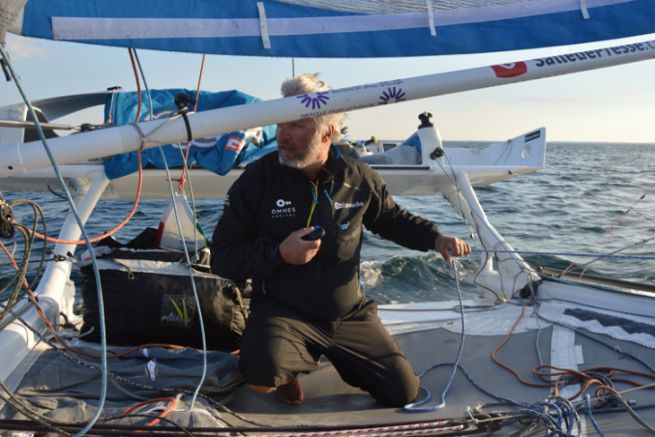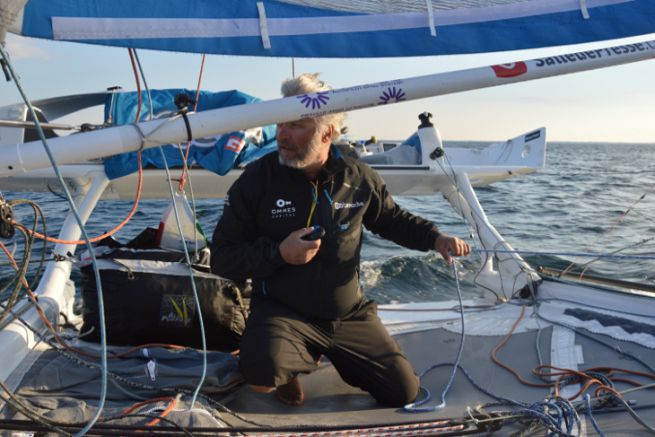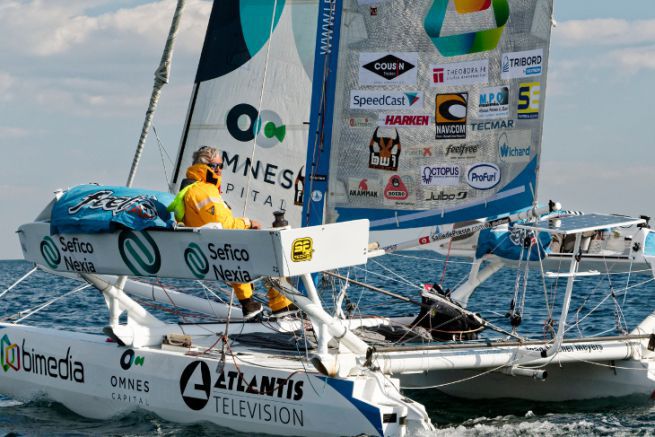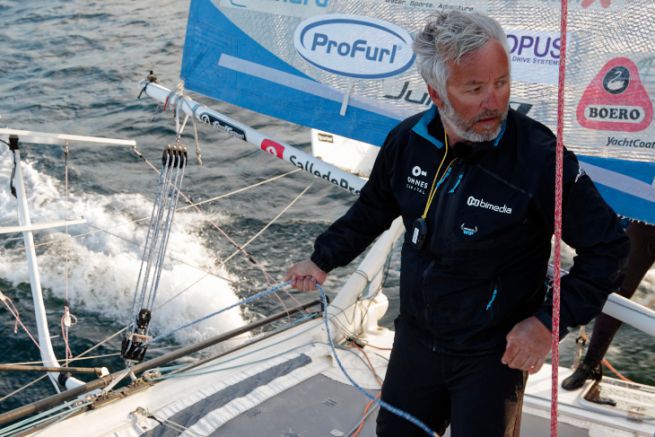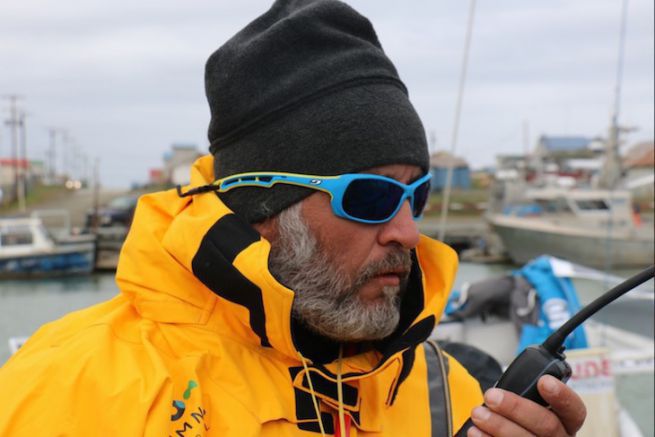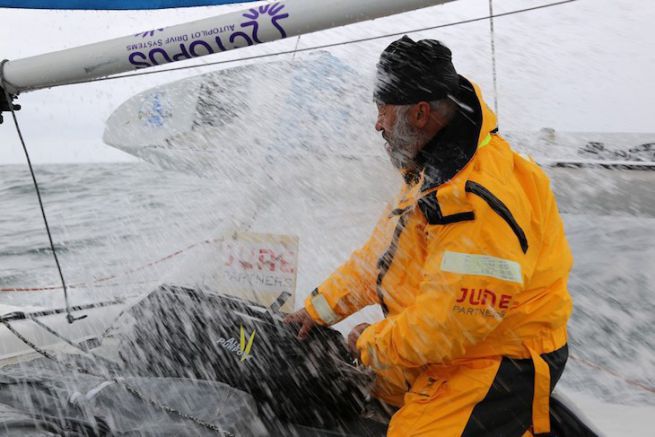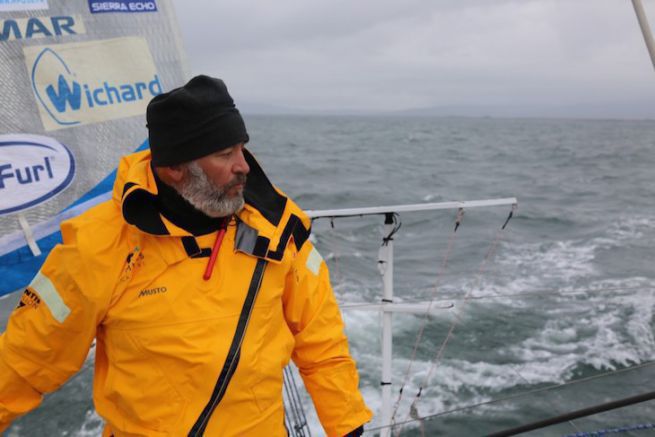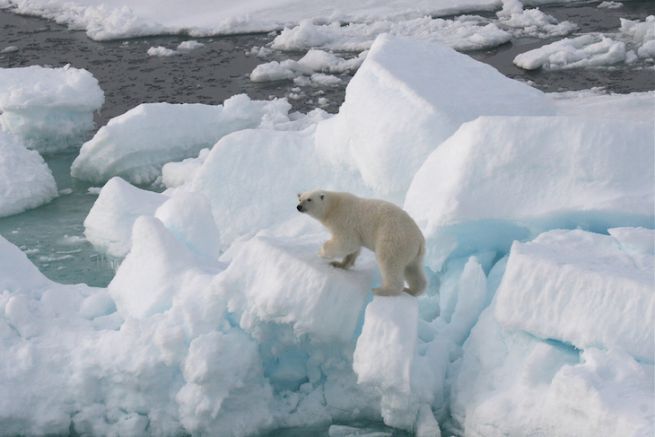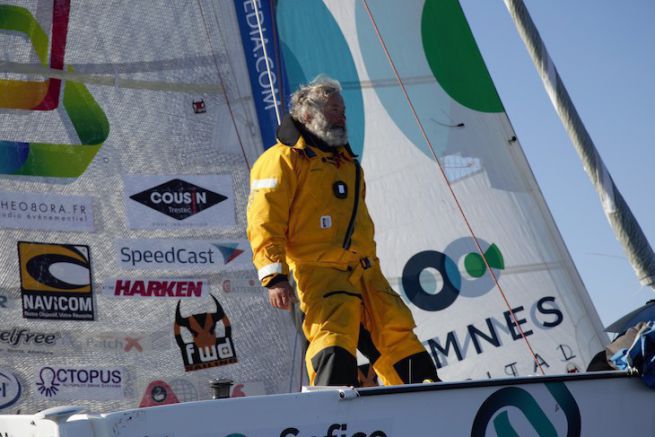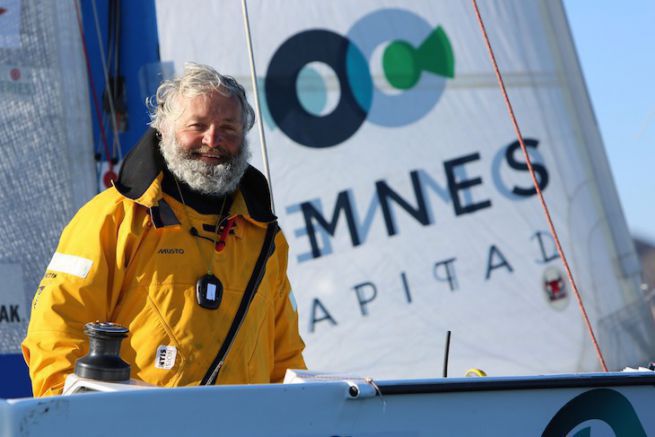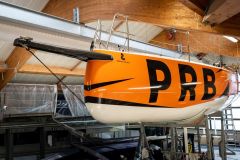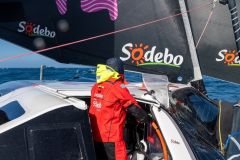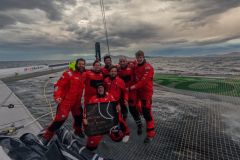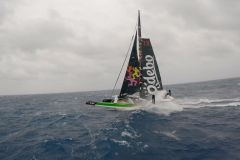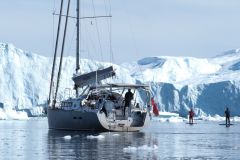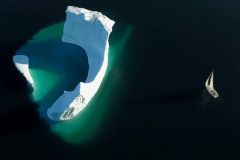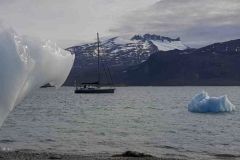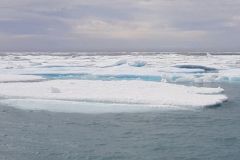Can you present us this new challenge in a few words?
Be the first to sail the Northwest Passage alone. It is a matter of crossing the Pacific Arctic Circle to reach the Atlantic. There are about 250 boats that have been through there, but with engines. Only Sébastien Robinet had tried the experiment, but there were two of them on a liveable sports catamaran.
This trip will be a combination of everything I learned during my world tour on my sports catamaran, but in a more hostile environment. I have been hearing about the Far North for a long time and I have always had an attraction for the poles.
I will have many advantages to sail with this small boat. It is easy to sneak in, easy to wet and makes no noise for wildlife. On my world tour, I found a lot of pleasure there. It is a real success in terms of construction, combining both the speed of Formula 1 and the robustness of 4x4.
People think I'm hurting myself on my boat, but not at all. I'm having fun on this boat... I'm vibrating! I live! I live!
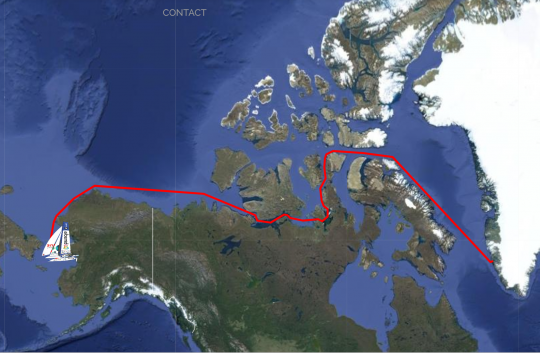
Are you planning to take any steps?
I plan not to take any steps, ideally. But I will face several difficulties. I may be stuck in Cambridge Bay due to late deglaciation, breaking my boat, running out of water or food..
I hope to continue and stop only at the anchorage for a few hours, without necessarily stepping ashore.
Will you be in contact with the earth?
I have a meteorologist, Christian Dumard for security. With regard to the round the world trip, I will have information for storms and ice.
I wanted to have no assistance, no routing and no autonomous navigation. I would do my route from day to day, depending on the ice chart. I will also sail a lot on sight. But unlike sailing in an ocean, there will be many mandatory passages and you will have to go along the coast.
That sounds reassuring, but it's not. There will be unidentified rocks, floating ice cubes, ice floes not to be grazed or whales to avoid. You can't afford to sleep too long because of the permanent obstacles. This has been seen in Sri Lanka ( Editor's note: on his round-the-world trip, Yvan had broken his boat on rocks while sleeping, his autopilot having let go ). I'm going to be in Figaro mode, with very short sleep periods. Except that the Solitaire du Figaro is 3 days!
Christian will follow me all the time and if anything happens to me, he'll call for help. If this is a life-threatening emergency, there is no chance of survival. Rescue is limited and there are very few boats on site. Mapping is bad in the North. If I'm slightly injured or cold, I'll be fine. I've been preparing for this.
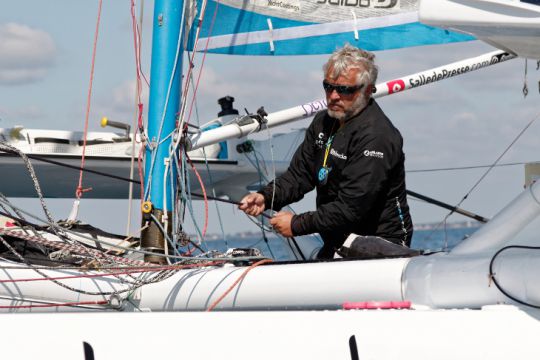
How long does it take you to complete your crossing?
If everything were perfect, in an ideal world, it would take me 40 days. I am well aware that it is not going to happen like that. I estimate the duration to be between 40 and 60 days, but 50 days would be satisfactory. When you sail along the coast, you live through the vagaries of the ice. I will have to slow down, especially because of the fog, which is very frequent in this area. I don't have any radars and with the ice cubes, we'll have to slow down. Everything is done to slow down so I don't plan on making big averages. The idea is adventure and the objective is to finish the challenge!
How do you plan to get water and food?
The boat is packed to capacity and I couldn't provide enough water and food. It is very loaded, low on the water and likely to break. I brought a little more food and water than on the 25 days of my longest stage of my previous round the world trip. Over 50 days (the timing he set for his crossing), we spend a lot of calories so I will supplement my food with fishing. When there is a calm, I go fishing in the bottom, for Inuit because the train doesn't work. Near the coast, I could also catch some salmon.
For water, I have several solutions. Either rainwater, but it doesn't rain much. Either the manual watermaker, but it's daunting and addictive. It is necessary to pump 4 to 5 hours per day. Otherwise, I can also collect water from the ice cubes, but it has to be ice from the ice pack and not the new one.
So, at some point, it's not impossible that I may have to stop. I'm under pressure on that too.
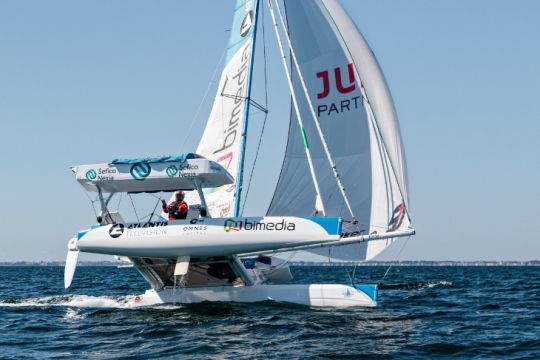
Why associate an ecological cause with your challenge?
My will is to establish this project that we launched a year ago ( NDLR Raising awareness of global warming and demonstrating the presence of multiple oceanic wastes through the Sea Cleaner ). I've read studies on ocean pollution arctic, where the presence of plastic is very important. Cameras have been lowered to a depth of more than 1000 m and the result is impressive! Plastics arrive in this area through marine currents. So I'm going to pick up some garbage and film the pollution. It's interesting to go and see the damage for yourself.
And the record in all this?
I'm going to try to set a record for the northwest passage under sail, as long as I don't stop ashore. The fact of getting wet is not a problem and will not prevent me from making the record official. However, you should not set foot on the ground.
I carry with me a WSSRC GPS tracker ( NDLR: organization of sailing records ) to try to break this record, as the Chinese skipper Guo Chuan did on the trimaran Qingdao China in September 2015.
The adventure in general has been lost a lot in sailing. We no longer meet adventurers, explorers. Today, we focus on the comfort of competition and cruising. I hope this challenge will make others want to beat it... if I can do it!

 /
/ 